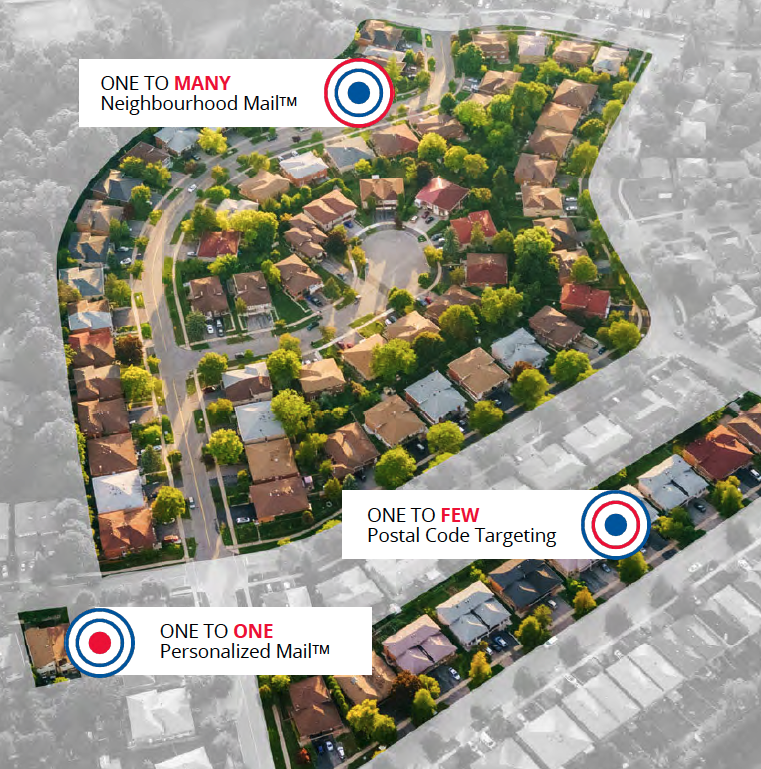No matter what your industry, business size, marketing goals or products are, successful direct mail marketing starts with data. What do we mean by this? We’re talking about customer data. Precise information about your brand and customers that you can use to connect with more prospective customers.
Every business gathers data, even if it’s not intentional. Your customer lists, services areas, customer reviews – it’s all insight that you can use to improve your targeting. In this article, we show you how to use your own business data to:
- Creating Your Ideal Customer Profile
- Use Your Customer Profile to Target Look-Alikes
Creating Your Ideal Customer Profile

As your business grows, you will get more information – more data – on your existing customers and prospects. By organizing and reviewing this data regularly, you can use it to define a profile for your ideal customer.
Why should you create a profile for your ideal customer? Simple. To create your ideal buyer, and to understand who you are looking for when you create promotions. When reviewing your data, we recommend asking yourself these five questions:
- What are the demographics of my customers?
- Age
- Income
- Education level
- What are the geographic locations of my customers? Where do they live?
- Do they have any pain points that would influence their buying decisions? For example, are they working families that just don’t have any spare time?
- What life stage are my customers in? Do they have any lifestyle habits? For example, are the parents with children or empty nesters?
- Where do they spend their time online?
You probably already have these details and it’s just a matter of organizing the information so you can understand and use it in your marketing strategy. With this information written down, you can then start to build a customer profile for your existing and target customers.
Example Customer Profile – Meet Mary!

- Mary is a 27-year-old female millennial.
- She frequently uses social media to connect with friends, family and her favourite local businesses.
- She lives in an urban area and enjoys getting gifts and discounts from her favourite brands.
- Finances – Mary makes $60k/year. After paying her monthly expenses, she spends her disposable income at restaurants and coffee shops, sustainable clothing and entertainment.
- Life stage – Within the next few years, Mary wants to be a marketing manager. In the next five years, she sees herself starting a family and purchasing a home.
- Worries and fears – Saving for a home is a constant stress for Mary as she is living in an expensive city.
The more you define Mary, the more confident you will be in finding more individuals like her! As you collect more data, don’t hesitate to build multiple profiles for different parts of your business. By doing this, you can customize your messaging for each group based on what they need and want.
If you are a new business or simply don’t have an existing database, don’t panic. In this case, you can simply use what you’ve researched about your target audience to get started. There are data sources that can provide you with information about your customers, whether it’s by geographic location or through data shared by similar businesses. This will evolve when you start to gather your own data.
Here’s a list of 12 data points that we often use to help customers to narrow in on their target audience. Every industry is different, so if a data point doesn’t apply, simply skip it!
- Age
- Gender
- Household income
- Diversity – language and immigration
- Education
- Occupation field
- Marital status
- Family structure
- Number of children at home + ages
- Household size
- Building type – home? apartment?
- Building construction period
Using Your Ideal Customer Profile to Target Look-Alikes
Now that you know the characteristics of your ideal customer, you can use this information to create look-alike lists! We call the people in these lists look-alikes because they look like your existing clientele and are often extremely lucrative. Best practices for creating a look-alike list uses a blend of demographics, geography, life stage, lifecycle and behaviour to precisely target the right audience.
How can we create a look-alike list for Mary?
- Geographics: Downtown Oakville
- Demographics
- Female
- College graduate
- Earns $60K/year
- Interests & behaviour
- Buying habits – enjoys purchasing items matching her interests
- Pursues uniqueness
- Lifestyle & life stage
- Saving money is important – looks for a deal
- Has fixed expenses – student loans, rent, car insurance
- Likes to indulge – goes out with friends when possible

By creating your ideal customer profile and using it to target look-alikes, businesses can get granular with their marketing placements and messaging. By speaking to your ideal customers about how and where they want to be spoken to, you’ll see better response rates and make your marketing dollars go further.
Still, have questions about creating your list of ideal customers or how to create an effective marketing strategy to target them? Contact your Direct Response Media Group rep today to find a solution that will help your business reach its target audience.
Comments